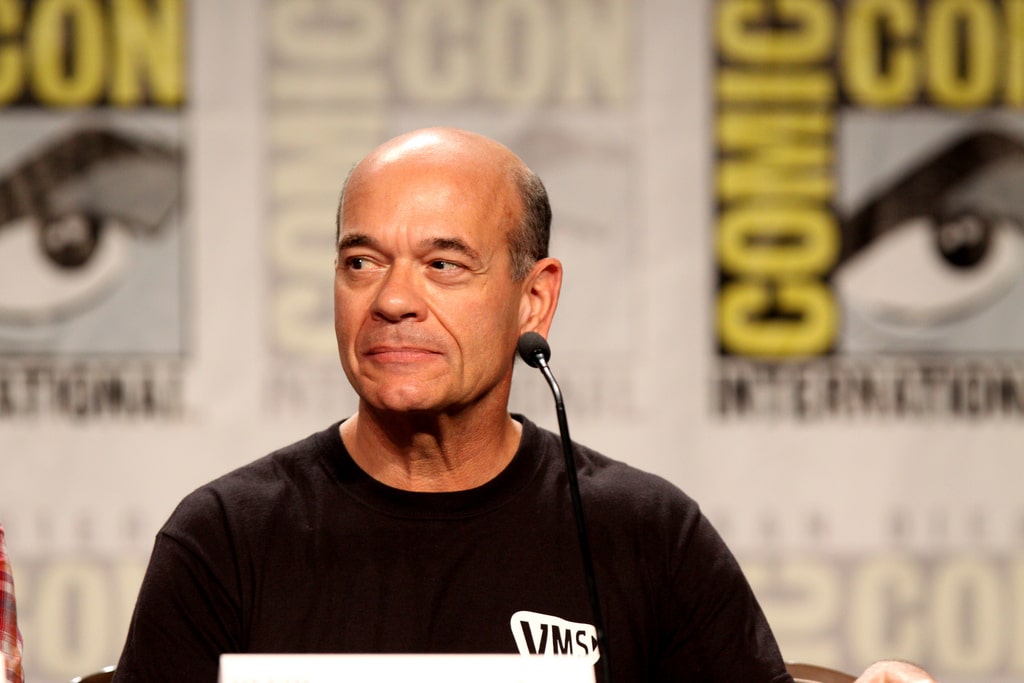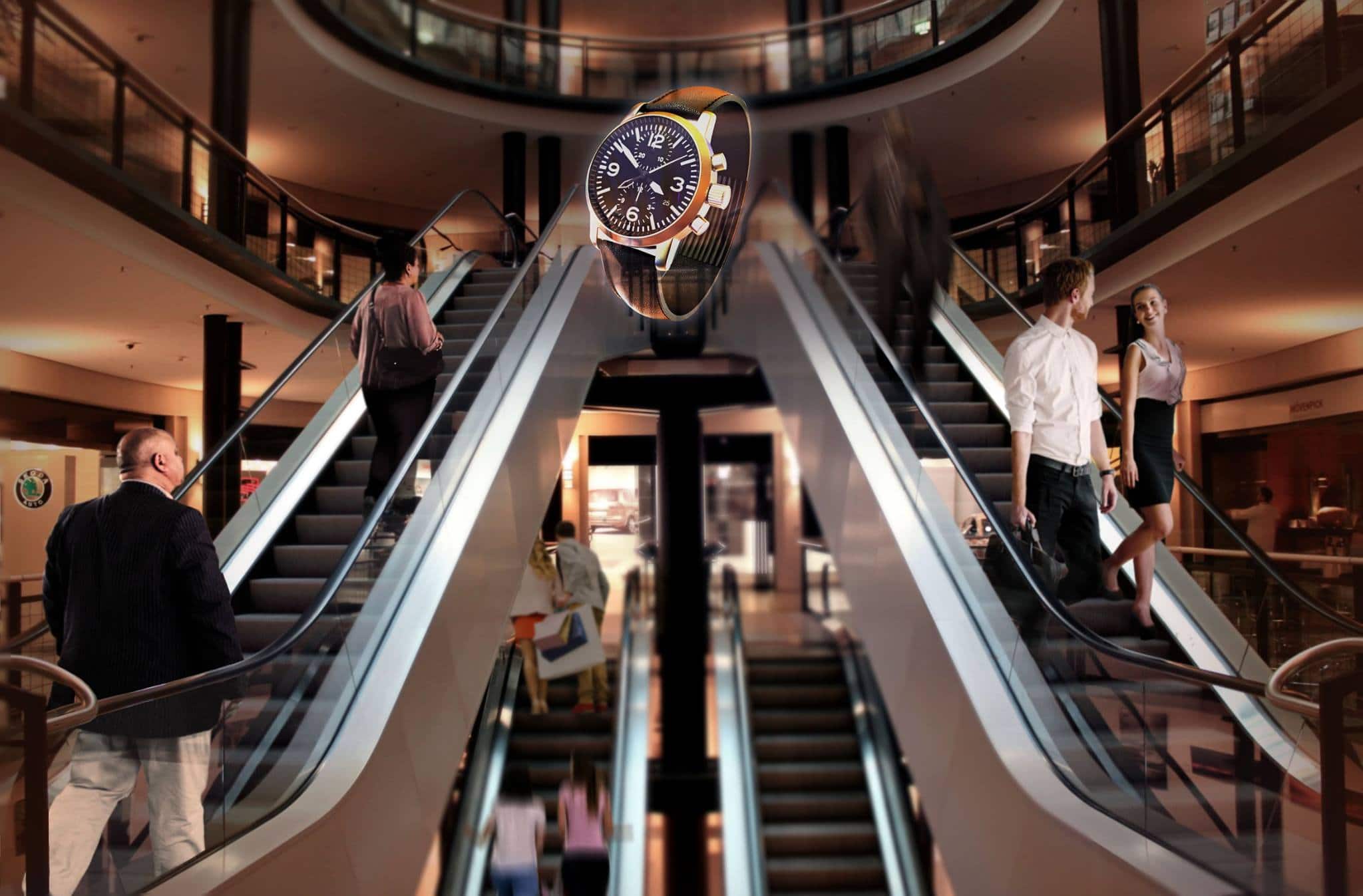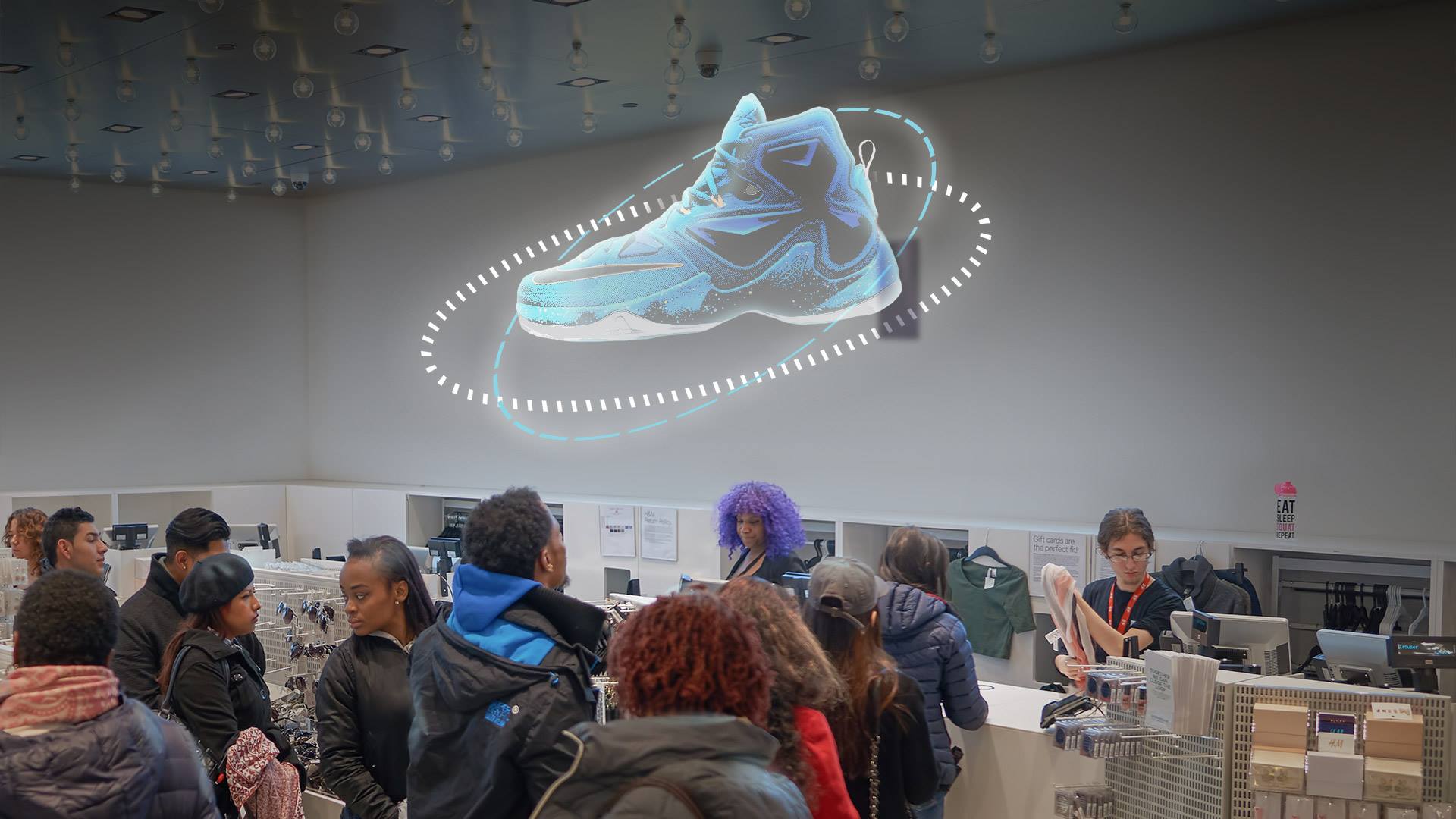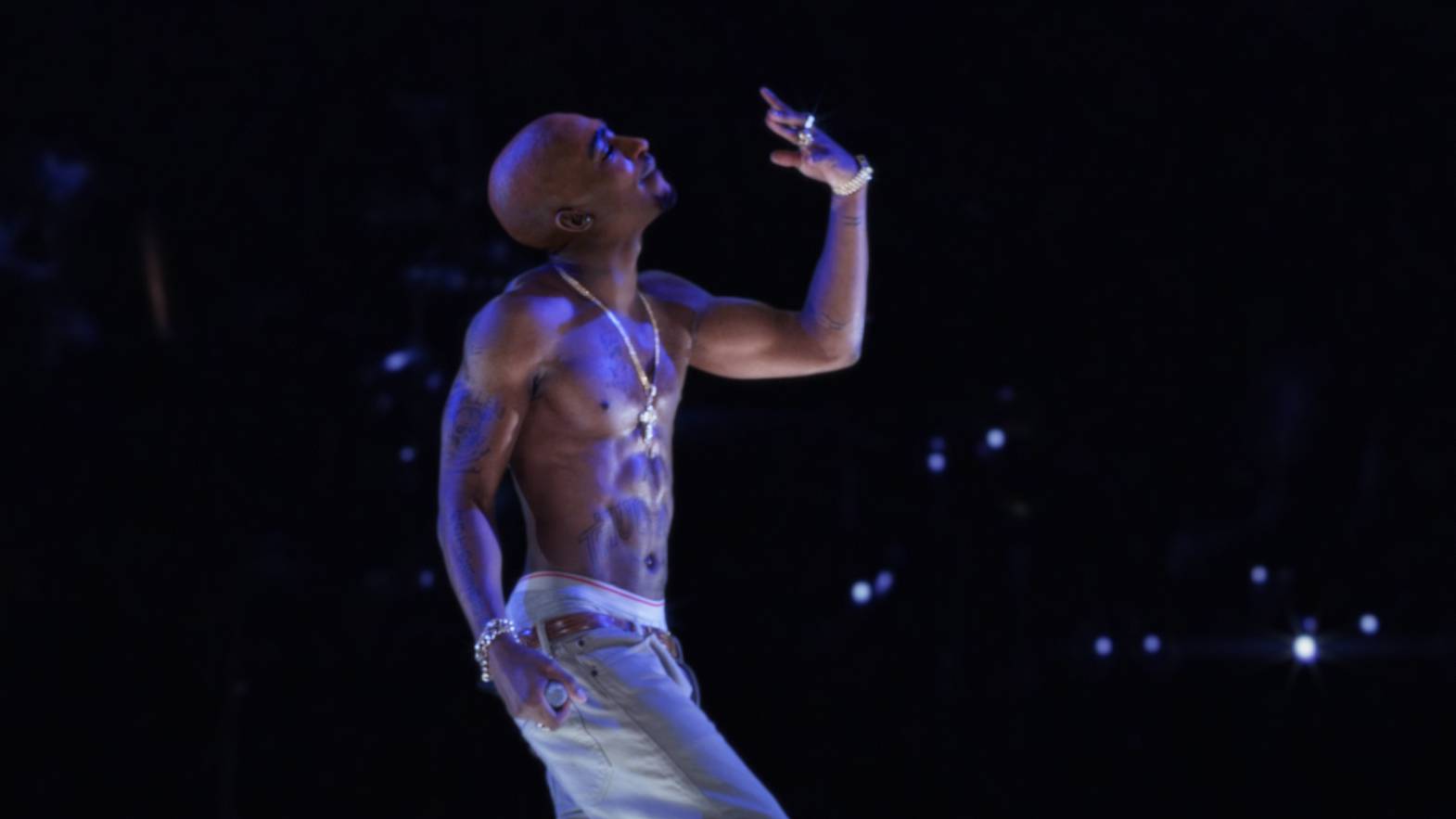In 2015, the UK’s National Rail service trialed holographic announcers at railway stations in Leeds, St Albans, and in parts of London. But, as far as experiments go, it was disappointing. Quite apart from being a herald of the hi-tech future, the announcers were simply clever videos projected onto plastic boards, “faux” holograms that would wave and flirt with passing commuters but would otherwise repeat the same message: “Please do not take luggage onto the escalator. Please use the elevators available”.
Not only was the holographic future distinctly un-fancy, “Shanice” and “Louise” were considered boring, annoying, and a little bit creepy too by much of the public. Having said that, it’s perhaps unfair to call holographic technology entirely futuristic. Holograms are almost mundane in 2017, as benign as cassette tapes and about as old. However, there are at least two different versions of the invention: the flat, shiny effect applied to Pokémon cards, stickers, and pieces of packaging (you can even buy chocolate printed with holograms), and the more advanced version embodied by Star Trek: Voyager’s belligerent Doctor, the Emergency Medical Hologram (Robert Picardo). British sitcom Red Dwarf also had a hologram in its main cast from the debut episode in 1988, the insufferable Arnold J. Rimmer.
IMAGE: GAGE SKIDMORE
Holoportation
So, we’ve been entertained by holograms on TV for almost three decades but is there any hope for the technology out in the real world? There’s an obvious problem to be overcome first. [pullquote]Projecting images is fairly simple; making them solid is not.[/pullquote] The Japanese project “Fairy Lights” managed to conjure tiny holograms out of thin air and make them touchable but the femtosecond lasers and super-heated plasma involved are safety risks best left in the lab. UK firm Ultrahaptics did something similar with sound waves but the illusion of presence is rather more fleeting and, again, it’s something that’s the sole domain of people in white coats for now.
The world of entertainment might not need something quite so sophisticated though. Using its HoloLens device and a rig of 3D cameras, Microsoft can “holoport” a person’s image from one room to another; it’s a form of communication most commonly associated with Star Wars (1977) and Mass Effect, and one that could potentially allow singers and magicians to appear at multiple venues simultaneously without leaving their own homes. Seeing a band “live” in the future might mean clearing out the dining room to make space for each member’s hologram. HoloLens can also place interactable game objects in the real world, such as Minecraft landscapes and Portal 2’s Companion Cube.
IMAGE: KINO-MO
Real-Life Interactions?
Another arm of entertainment, casino, has found potential in holograms too. The historic Avalon Casino on Santa Catalina Island, California, plans to lure millennials in with holographic guides, live performances, and robotic cameras. With the trend for live-streamed casino games at fever pitch, it’s almost inevitable that, in a holographic future, dealers and roulette wheels could end up holoported to games night too, wherever that might happen to be.
The casino industry has a long-running fascination with technology, not just as an adopter but as an influencer, according to online sources, it is mentioned that slot machines were the inspiration for parts of the iPhone’s design, such as the alarm clock interface. Another company targeting Las Vegas casinos is Kino-mo. A British firm, Kino-mo recently demonstrated holograms that can float in place at CES 2017 in Nevada. The example given was of a wristwatch hovering in a shopping mall. It’s a novel mode of advertising that’s been mooted in science fiction for decades but has, until now, occupied the same space as warp-drives and Captain Kirk’s green-skinned girlfriends; that is, the realm of imagination. For casinos, floating holograms could work as billboards, signposts, or even as furniture; solid projections could one day replace blackjack tables, after all.
IMAGE: KINO-MO
Bringing Back The Dead
An unlikely company, the BBC, has placed itself at the center of holographic entertainment, revealing a prototype for a holo-TV in September last year. Made from a horizontal flat-screen TV and an upside down acrylic pyramid, the BBC converted some of its archive footage for display on the TV, which makes use of the “Pepper’s ghost” illusion. Pepper’s ghost is an old (1862) carnival trick that creates transparent images simply by reflecting an original object off a pane of plexiglass.
It’s the same method the organizers of the Coachella Valley Music & Arts Festival used to put the late Tupac Shakur on stage with Snoop Dogg and Dr. Dre in 2012, an experiment that largely bombed – bringing the dead back to life as holograms seems a bit too close to the Red Dwarf reality for comfort. Taken purely as an example of the potential of holographic technology though, Tupac’s ghost is an encouraging development, even if the systems behind the feat are still a long way from realized. The BBC’s holo-TV feels more like a modern art exhibition in comparison, a tech demo on a marble pedestal rather than an immediately usable thing. The fact that the BBC’s digital chief described it in such terms (a “toe in the water for us”), only reinforces the position of holograms as a far-off technology, something mastered only in a galaxy far, far away.
There are plenty of opportunities for holographic technology to benefit the entertainment industry, but the world is still a few leaps of technology away from resurrecting John Lennon in its living room.
For more hologram-related news and information here on Bit Rebels, click here!




COMMENTS